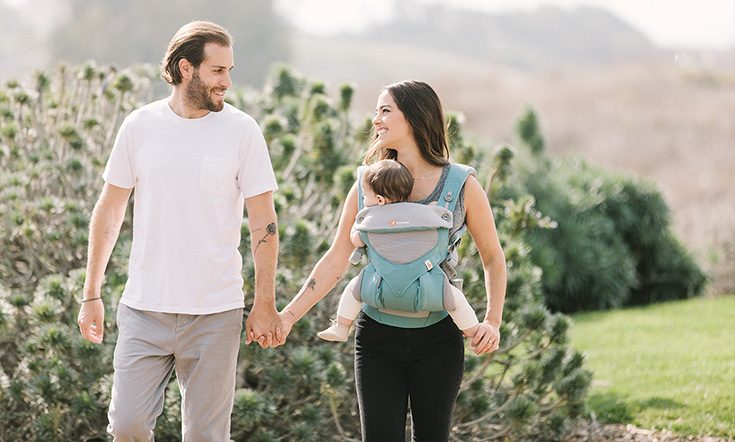

The first thing to remember when thinking about returning to exercise after you’ve had a baby is that your body has just done something incredible – growing a baby and giving birth is a transformative experience. Not just emotionally, but physically also; your body will have changed in ways that you may not have expected, even if you remained physically active and fit during your pregnancy.
The changes your body has undergone are not good or bad – they are completely natural, so if you’re missing your ‘pre-pregnancy’ body, remind yourself that your changing shape is an entirely natural part of the process. It took 40 weeks to grow your baby, it may take 40 weeks (or more) to return to your pre-pregnancy shape. Which is why it is super important to start slowly.
Before you undertake any abdominal strengthening exercises make sure you get the all clear from your doctor as some women experience separation of the abdominal muscles. If this happens you may need to be looked after by a physical therapist to ensure that the muscles come back together safely.
Relaxin, the hormone that is responsible for your body loosening up in preparation for birth, can stay in your system for up to six months after your baby is born. As a result, high impact exercise can put you at risk of injury, if not approached with caution. Walking or gentle yoga are both excellent forms of exercise and are both low impact.
Yoga
There is so much to be said for baby-friendly physical activity. It can sometimes be hard to fit exercise in around your baby, but yoga is another form of exercise that you can include your baby in. With the help of your baby carrier, you can carefully undertake a modified yoga class incorporating stretching, breathing and meditation, all while wearing your baby. Not only is this great for your health and wellbeing, it’s a lovely opportunity for bonding time with your baby.
Walking
A gentle walk is the perfect place to start. Walking with your baby in a baby carrier is a great way to get out for fresh air, move your body in a gentle way and remain physically close to your baby. Keeping them close in a baby carrier means that you are participating in aerobic, weight-bearing exercise but in a way that your body can manage. The benefits of walking are enormous, and while you are still building a special bond with your baby in those early months, a baby carrier will enable both physical and emotional connection.
Hiking
Once you are feeling fitter, you can extend that activity to hiking. It’s an amazing activity to do with your baby when using an appropriate carrier. There are baby carriers designed specifically for more active parents, and warmer climates. Getting out into the fresh air, and out into nature is great for your overall health. Not only will it improve your physical health, your mental health, going on a Sunday hike with your partner will help you reconnect after a busy week.
While incorporating a gentle walk in to your daily routine, it’s important to remember to do your pelvic floor exercises, also known as kegel exercises. Your entire body is healing and recovering from pregnancy and birth, your pelvic floor is no exception. Once your pelvic floor is strong again you can consider doing more vigorous forms of exercise. Launching straight into an aerobics class or a running routine could do further harm to your pelvic floor, so combining walking with pelvic floor exercises is a great way to start.
The Continence Foundation of Australia advises waiting until at least 16 weeks before considering returning to high a impact exercise program, both for the protection of your pelvic floor but also to protect your lower back. It can take a minimum of eight weeks before your abdominal muscles are strong enough to support your lower back and pelvis, so if you are doing high impact exercise before this, your risk of injury increases.
The key to returning to exercise after having baby is to start slowly and gently, avoiding high impact exercise for the first few months after birth. A regular yoga or walking routine will bring you and your baby a lot of pleasure; both in the early months and beyond when your baby is engaging more and more with the world, so walking is a great way to start. Once you are feeling strong and have been given the all clear from your health care provider, you can consider more vigorous exercise.























